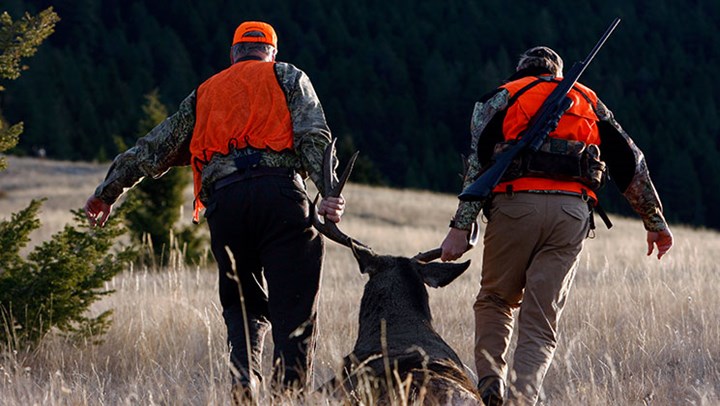
by Chris Chaffin - Sunday, December 31, 2017

“Hey, you want to take one last look for a deer today?” my co-worker asked as he stuck his head in my office. It was 2 p.m. on the last day of deer season and as a fairly new hunter, I was eager to go. I still hadn’t had the opportunity to connect with a buck.
We lived in the great deer country of southern Utah. A mere 10 minutes out of town we hit the dirt roads heading back into the mountains. A winding road led us higher, past the lowest foothills, into the lowest valleys where two-tracks crossed the main road. We started to see game trails stringing down the hillsides and the anticipation jumped up a level.
Admitting this was a last hour hunt, we were trying to cover ground by mostly eyeballing the ridges and draws but occasionally stopped to glass the heavily vegetated mountainside. We’d been out less than an hour when we turned onto a two-track that slanted steeply uphill, putting us (on the passenger side) next to a sidehill where we looked almost straight up to a slight ridge about 75 yards above us. I strained my neck to look along the ridge.
“There’s a buck,” I shouted! My partner hit the brakes, threw the tranny into park and we both bailed out as quietly as possible. I slipped to the back of the truck while chambering a shell. The buck and his royal headgear, consisting of a forked horn on each side, stood in his elevated platform looking down at us like we were aliens on the practical- joke, hidden-camera TV series “Candid Camera.”
With my orange vest and cap thrown hastily into place and a loaded gun with the scope turned down to low power, I stepped onto the hillside, not quite experiencing “buck fever” but seriously excited.
"Experiences like these are what connect hunters with nature and embed in us all the need and responsibility to pass on this priceless heritage to our sons, daughters, friends, neighbors and co-workers."The buck still looked down on us as I shouldered the rifle and got him in my sight picture. Then I saw he essentially was facing straight uphill, with only his head and neck turned downhill to look toward us. As I concentrated on the picture in my scope, it became clear there was one very prominent feature in the crosshairs: the south end of a north-bound mule deer.
Imagine this inexperienced hunter’s dilemma—the last hour of hunting season, a legal buck only 75 yards away, standing still and calm but with no place to put a clean shot. I agonized over my situation. The buck eventually started getting nervous, making it decision time.
I took the only available shot that could be cleanly lethal—yup, you guessed it—right up the caboose. He disappeared out of my sight in a flash. After I reloaded and we both looked uphill for any movement, a small fork-horned buck ran off stage left. Given the distance and the size of the target, I was dumbfounded. I knew I had hit where I aimed.
“That was another buck!” my surprised companion said. “Your deer dropped straight to the ground!” After a few deep breaths and a minute to calm myself, I climbed the hill and found my very first buck lying almost serenely in the exact spot he’d been standing the entire time. I unloaded my rifle and got ready to field dress my deer.
The shot had gone exactly where it was aimed and to my amazement, as I noticed upon later examination, I had not damaged either hindquarter. There was only the smallest of grooves along the right ham, no deeper than a quarter-inch.
I spent days learning from this experience—about aging venison and processing it myself. I garnered lessons on deer anatomy and butchering. I found out where to get the hide tanned. I experienced what a difference a truly sharp, quality knife makes. But most importantly, I internalized the concept of hunters—me—being a fully-functioning part of the web of life.
Today, more than 40 years later, those memories and lessons are as clear as that sunny, cool, fall afternoon in southern Utah. Experiences like these are what connect hunters with nature and embed in us all the need and responsibility to pass on this priceless heritage to our sons, daughters, friends, neighbors and co-workers.
Hunting is so much more than “reducing an animal to the bag,” as the old wildlife biologists used to say. It is part of life and a blessed connection to our world. And like all blessings, it should be shared.
E-mail your comments/questions about this site to:
[email protected]
Proudly supported by The NRA Foundation and Friends of NRA fundraising.
